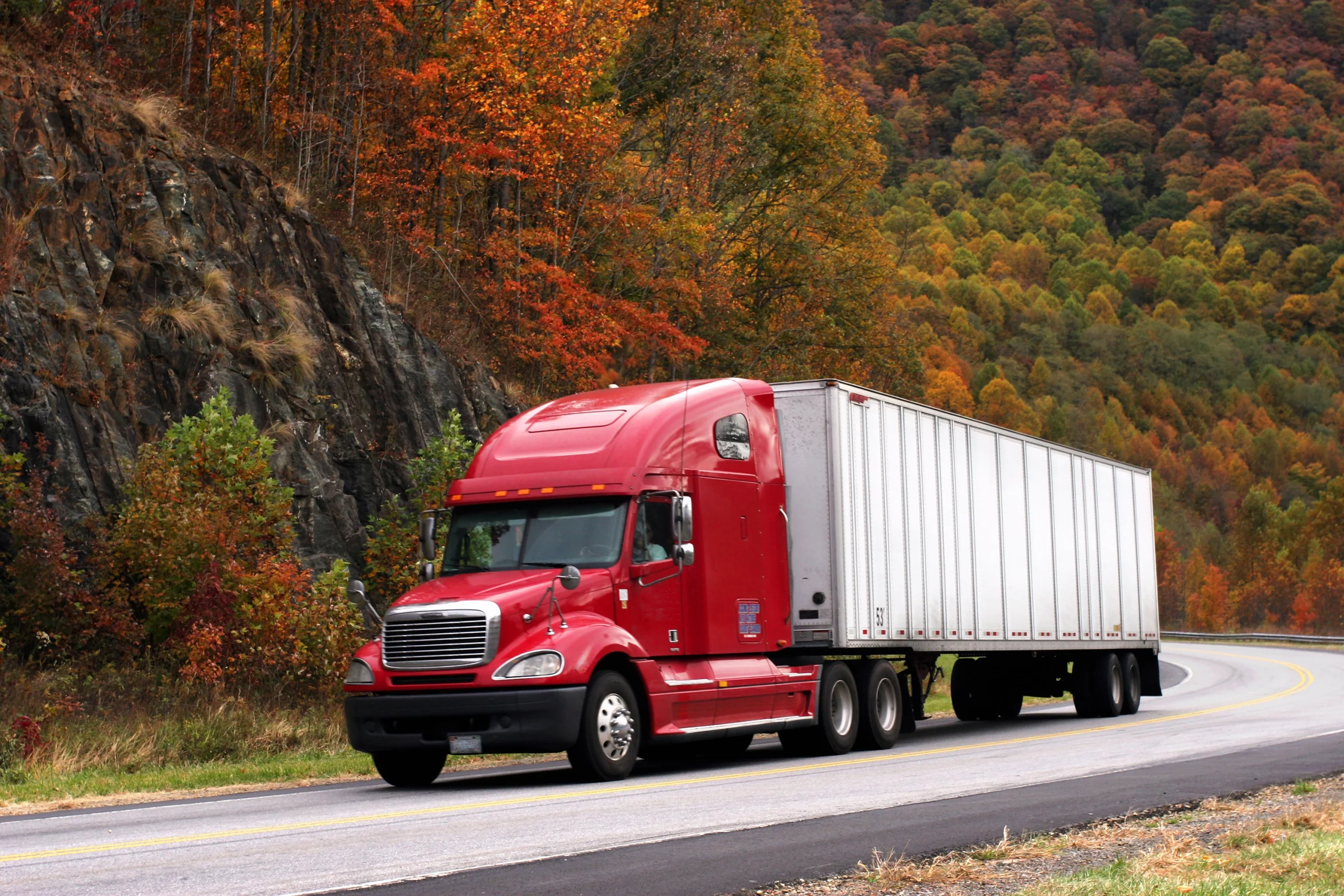TRUCKING ACCIDENTS
Head On Truck Accidents in Colorado Springs
Colorado Springs Head On Truck Accident Law Firm
Truck-involved head-on accidents are among the most deadly on Colorado highways. They resulted in trucks exploding into flames, passenger cars crushed beyond recognition, horrific injuries and fatalities in the stories I referred to above.
You may believe that huge truck head-on crashes are uncommon. But you’d be mistaken. They Happen All The Time When it comes to preventing truck accidents, education equals prevention. So, in this blog article, I’ll go over what we know about how and why truck head-on crashes happen, the consequences they have on their victims, and what you can do to prevent being a victim.
Let’s start with the fundamentals. How they happen is obvious, but why they happen is not. A head-on collision occurs when two cars going in opposing directions hit front-to-front. They shouldn’t happen since cars in the same lane should never travel in opposite directions. When this happens, it usually signifies something significant has gone wrong, particularly if one of the cars is a heavy truck.
One car crossing the centerline or median strip into an oncoming lane and the path of an approaching car is the most probable scenario for a head-on truck crash. Head-on crashes occur less often when a car travels the opposite way on a one-way road.
So, what makes someone swerve into oncoming traffic? Unfortunately, since these events often result in deaths, answers aren’t always simple to come by.
Types of Truck Accidents
Accident with a Fatal Truck near Denver
On Interstate 12, two semi-trucks and an SUV collided. It was the middle of the day. A semi-truck and an SUV driving westbound collided for unclear circumstances, and both lost control.
After crossing a reasonably broad grassy center median strip, the cars joined the eastbound lane. A semi-truck driving eastward crashed head-on with another semi-truck there. Both drivers were killed in the crash. Even though the SUV overturned, the driver was unharmed.
A Head-On Collision is a collision that occurs when two cars collide head Choosing between a semi-truck and an SUV is a difficult task. In the vicinity of Denver, Colorado
On Highway 24, a semi-truck and an SUV crashed head-on while heading in opposing directions. When the SUV crossed the centerline of the two-lane road in broad daylight, the accident occurred.
The truck driver had minor injuries, while the SUV driver experienced significant injuries that forced him to be flown to a Lafayette hospital. The SUV crossed the centerline due to driver distraction, according to police investigating the collision.
Free Consultation
NO FEE UNLESS WE WIN
Near Hico, Colorado, a fatal head-on truck collision occurred.
Two semi-truck drivers were killed in a violent head-on accident that engulfed both of their cars in flames, sending plumes of smoke into the air that could be seen for miles. According to eyewitnesses, one of the cars crossed the centerline of U.S. Route 281 into the path of the second truck, according to eyewitnesses.
A third truck attempted to swerve to escape the collision but collided with the first two tracks. The cause of the collision is still being investigated. One of the cars crossed the centerline. Distraction or driving tiredness are two possibilities.
Car-on-Truck Crash Causes Serious Injuries Near Copperas Cove, Colorado
On a lengthy, raised bridge segment of the U.S. Highway 190/Interstate 14 bypass, a Hyundai car crossed the centerline and struck head-on with an 18-wheeler. The car’s driver was seriously injured and was airlifted to a nearby hospital. At 6:30 a.m., an accident occurred.
The reason for the driver’s veering into oncoming traffic has yet to be revealed. Surprisingly, the car was going westbound (i.e., with its back to the rising sun), ruling out solar glare as a possible reason (which is known to cause these types of crashes nationwide).
Big-Rig and Pickup Truck Collide in a Violent Head-On Collision In Colorado Springs, Colorado.
A pickup car and a large rig crashed head-on west of Colorado Springs, Colorado, around 3:25 a.m. while heading in opposing directions on U.S. Highway 87 North. The truck driver was “extracted” from the car and transported to the hospital with serious injuries.
The pickup car was entirely demolished in photos taken at the accident site, demonstrating the force of the hit. Many circumstances might have contributed to the disaster, given the late hour.
What can we learn from these cases of head-on truck collisions? One conclusion is that these crashes are so severe that determining why they happened is challenging. Driver distraction, weariness, and impairment are conceivable (and maybe probable) reasons.
The second is that whatever causes a car to enter an oncoming lane and collide with a truck, the consequences will be devastating for at least the smaller car’s driver and both drivers in a truck-on-truck collision. How bad could it get? Fatalities are prevalent, as you can see. Even if individuals survive head-on truck collisions, they often have serious, life-altering injuries. Continue reading to find out more.
Violent Head-On Truck Collisions Result in a Wide Range of Injuries
Trucks and passenger cars are vastly different in terms of size and weight. A “truck” is defined as a car that weighs at least 10,000 pounds. It may weigh up to 80,000 pounds when fully loaded. A normal mid-size SUV, by contrast, weighs about 4,000 pounds. To put it another way, a fully loaded truck is about twenty times the weight of a car.
The physics principles dictate that the smaller car will be destroyed in a head-on collision between cars with such a large disparity in size and weight. Take a look at the photos of the truck in the news report about the collision in Colorado Springs, Colorado. It had no hope of escaping serious injury, and neither did its driver. Drivers and passengers of smaller cars involved in head-on crashes with trucks are at a significant chance of suffering any of the following injuries if they survive at all:
Traumatic amputations and crush injuries. When a large truck collides head-on with a smaller car, the smaller car’s body gets torn beyond recognition. When the passenger compartment is crushed, the driver and passengers are often pinned between the jagged or flattened metal.
As a consequence, limbs are crushed or severed forcefully. These are potentially fatal injuries. They often result in substantial blood loss right away. If a person survives such an accident, they will face a lengthy and painful rehabilitation period, as well as a lifetime of impairment.
Injuries to the spinal cord. A head-on collision with a bigger, heavier car causes shock waves to go through the torsos of both drivers and passengers. The spine bends, compresses, and expands abnormally. Extreme stresses on the spinal column can cause structural damage, compressing or severing the spinal cord.
This often results in temporary or permanent paralysis and a life compounded by the high expenses of healing from the injury and adjusting to life in a wheelchair or mobility device.
A traumatic brain injury is a kind of brain damage that occurs when the brain is Airbags will nearly always deploy in a head-on collision with a truck. However, the severity of these collisions is such that drivers and passengers might suffer severe head injuries even with the protection of frontal airbags.
Traumatic brain damage is often caused by these hits, which induce bleeding and swelling within sufferers’ skulls (TBI). Loss of consciousness (e.g., coma) and significant motor, speech, emotional, and cognitive impairment are common signs of a catastrophic TBI. Some TBI victims may regain function over time, but most do not.
Injuries to the internal organs The human body is not designed to sustain the force of a head-on collision between an car and a truck. Internal damage to major organs, such as burst spleens and punctured lungs, is common among these accidents victims. Not only can these injuries often result in serious internal bleeding, but they may also lead to long-term health problems that may never entirely heal.
Trauma to the mind. Anyone who survives a head-on accident with a car and recalls it is likely to be emotionally traumatized for the rest of their lives. Severe PTSD, anxiety, and depression may follow survivors of head-on truck collisions for years, necessitating continuing mental health treatment and, in some cases, medication.
Injuries to the neck. A high-impact collision often results in soft tissue injuries to the neck and shoulder region (though you can get some SERIOUS injuries from lower impact accidents as well). Mild injuries may heal rapidly if sufferers are attentive and unlikely to cause long-term complications, but head-on truck accidents seldom result in minor neck injuries.
They result in SEVERE trauma, which might have long-term consequences. Although symptoms may not appear for 24 hours or more, significant trauma to the neck may damage the bones, discs, ligaments, and muscles. Strong forces may also cause nerve injury in the neck. Neck injury patients commonly encounter the following symptoms:
Back injuries. When a truck collides head-on with your car, bodies shift in a variety of ways, resulting in paralyzing and severe back injuries. When an accident happens faster, back injuries are more painful and significant. Back injuries may take many forms, but the most common are broken vertebrae, herniated discs, and slipped discs.
Head-on truck crashes may affect the whole spinal column, yet it only takes one disc or vertebrae to trigger pain. In addition to the intense agony, many with serious back injuries cannot find relief whether they sit, stand, or lay down. Back injury sufferers may need one or more corrective procedures to relieve pain, including braces, steel plates, screws, or other devices.
Avoid colliding with a truck head-on.
The fact that truck head-on crashes are unexpected is perhaps the scariest aspect about them. After all, who expects to see a big car barreling at them? However, there are steps that drivers may take to lessen their chances of being involved in one of these devastating crashes. Here are a few pointers.
Understand the High-Risk Environments and Situations
Four of the five collisions detailed above occurred on highways with just a centerline dividing opposing traffic lanes. That doesn’t imply these roads are always dangerous. Still, it does suggest that anybody driving a long, straight, flat length of two-lane road where a car is likely to be heading in the other direction should be particularly cautious.
Passing on a two-lane road, for example, should only be done when there is no traffic approaching from the other way. Also, be wary of traffic on these routes late at night or early in the morning since you’re more likely to meet a tired or intoxicated motorist at such times.
Best Practices for Blind Spots
A collision between a car and a truck moving in the same way might result in a head-on collision with another truck traveling in the other direction, as the Livingston, Tangipahoa Parish disaster demonstrates. Beware of a truck’s blind spots on the highway if it is driving in the same direction as you! Blind spots exist on all four sides of a semi-truck. The greatest blind spot is on the passenger side, which is two lanes wide and runs the length of the car. As a result, NEVER pass a car in the lane to its right, and get out of blind zones as quickly as possible.
Don’t drive if you’re tired, drunk, or distracted.
Fatigue, impairment, and driver’s attention are three significant reasons contributing to cars departing their lane and swerving into oncoming traffic. DRINKING AND DRIVE IS NOT A GOOD IDEA. But, more significantly, you should never go behind the wheel without enough rest, or if you’ve taken drowsy-causing medicine, and you should never text-and-drive (or do other things that take your attention away from the road ahead).
Prepare to Drive
Head-on truck accidents might occur due to poor road conditions. To avoid this, always have a pair of sunglasses on hand to shield yourself from road glare (polarized glasses are best). Keep your wipers in excellent working order, your windshield clean, your tires with good wear and your headlights turned on at all times.
Truck-on-truck collisions aren’t supposed to happen, yet they do. So, what’s next?
So, what have we discovered? To begin with, head-on truck crashes should never occur, yet they frequently do. Second, they’re virtually always life-altering, if not life-threatening, when they happen. Third, if you take a few basic steps and keep vigilant behind the wheel, you can prevent yourself from these TERRIFYING accidents.
Accidents can happen, however, particularly when the driver is careless or has high expectations from his business. If your family has been through the fear and tragedy of a head-on collision with a truck, know that you may be entitled to considerable compensation depending on the facts and circumstances of the event.
A consultation with an expert head-on truck crash attorney is the best method to learn about your rights. Although not every accident results in compensation, many do, even when numerous parties are at fault for the accident. Please DO NOT WAIT for justice to come to you; seek it as soon as possible by contacting a Semi Crash lawyer to safeguard your rights.

FREE CASE REVIEW
We are standing by ready, willing, and able to help you. You can schedule a free consultation here on our website, or give us a call and talk to us. Whatever you prefer, we will accomodate you!








